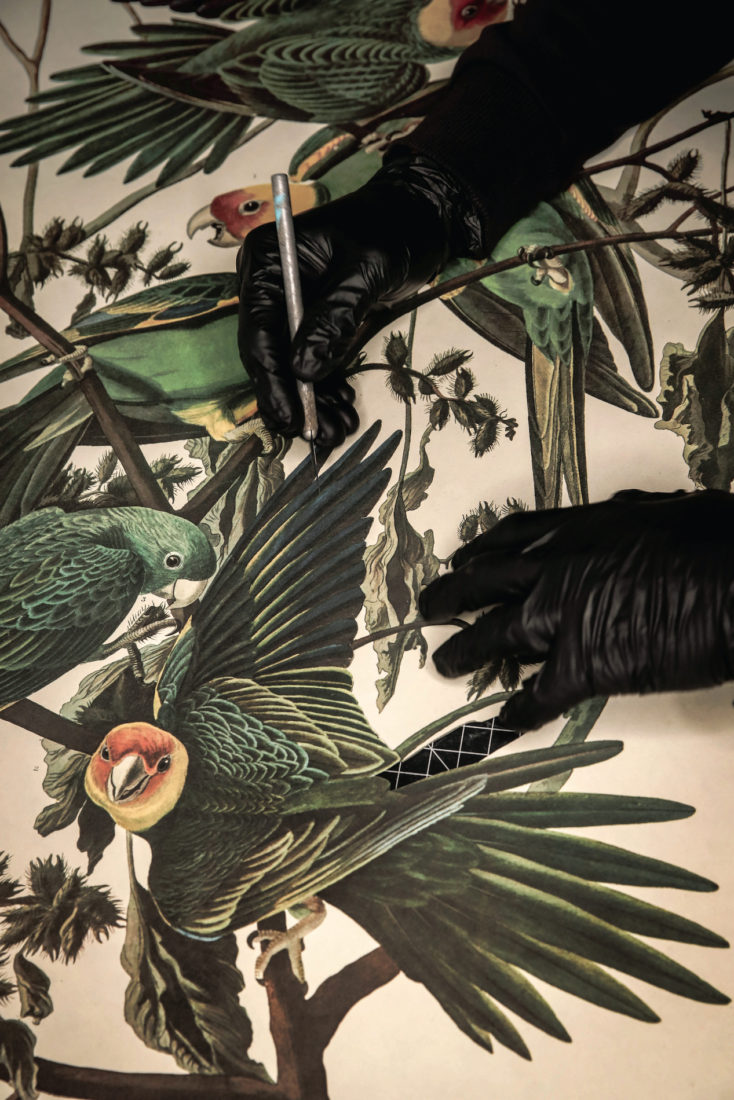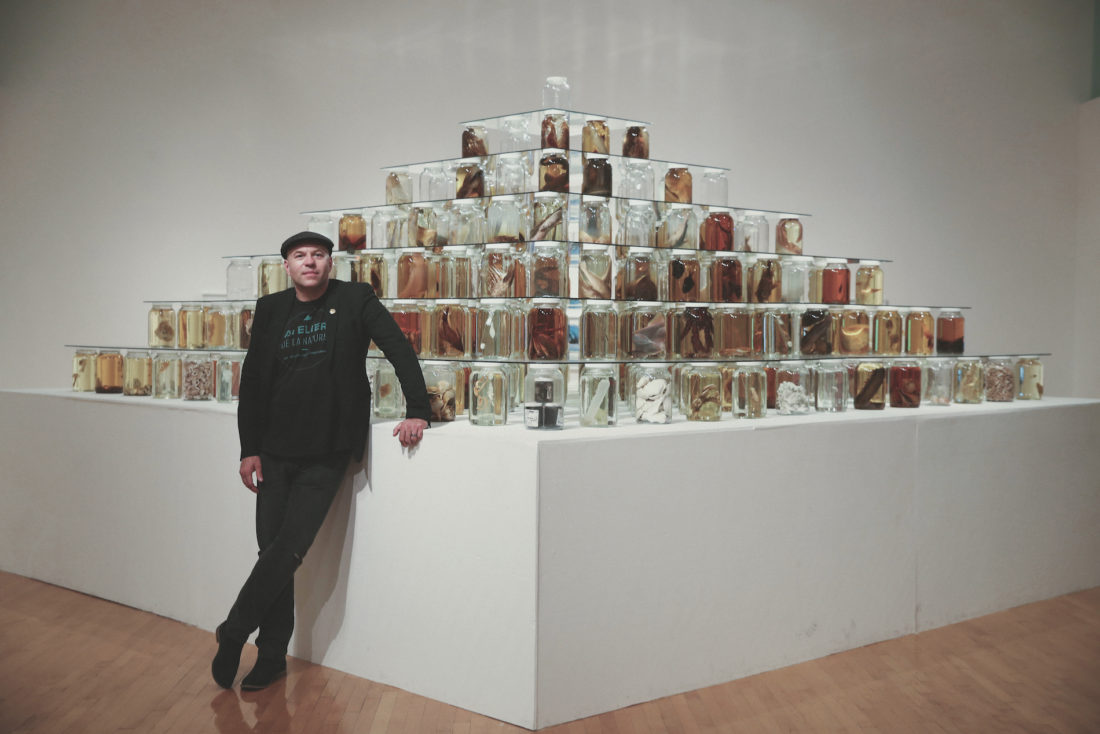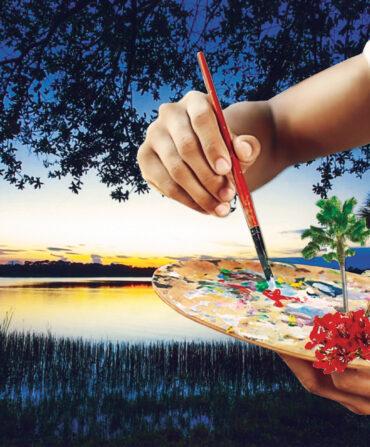A hundred yards behind Brandon Ballengée’s art studio, in a former cane field near Lafayette, Louisiana, his dog lollops right over a snake. “Oooh, look at that! A black-masked racer!” says Ballengée—a biologist by training—in a thrilled whisper. “Hey, it’s okay. You’re okay,” he tells the snake, before it slithers into the forest of pecan, holly, persimmon, and pine.
Four decades ago, these woods—home to tanagers and buntings, opossums and rice rats, coyotes and bobcats—were a monoculture, like the adjoining soy field turned prairie to which Ballengée and his family moved six years ago, fulfilling his dream of running a nature reserve. “There was nothing,” says Ballengée, who is forty-seven. “It looked like the surface of the moon.” But after years of planting, the fields have come alive. Grasses shoot roots into the soil, sequestering carbon. Butterflies browse the wildflowers, while Baccharis pollen floats like snow—a triumph of his science and art.
Ballengée spent his childhood in ponds and streams around his Ohio home, observing animals. After school, he’d trap tadpoles and fish and bring them to his bedroom lab, where he’d spend hours drawing them. Later, he studied deformed frogs in polluted landscapes during a PhD program at the University of Plymouth, in England, and the Zurich University of the Arts, in Switzerland, where he focused on the ways art can inspire conservation. For Malamp, the artistic culmination of that project, he displayed the frogs as relics—illuminated specimens and toddler-sized photographs of sacred individuals, lost through human action.

As a postdoctoral researcher at Louisiana State University’s fish lab, Ballengée began to examine the abnormalities of the dead sea life he had collected in the aftermath of the Deepwater Horizon oil spill, turning the fish’s tissue clear while staining the cartilage and bone. “I saw nothing,” Ballengée says with a laugh, “but they were so beautiful.” Nevertheless, he scanned the specimens and printed the photographs of their exquisite internal architecture—early works in his Ghosts of the Gulf series. He has since augmented those pieces with paintings of Gulf of Mexico species missing since the 2010 disaster, executed with recovered oil mixed with ethanol and a dispersant used during the spill, as well as Collapse, in which glass jars containing batfish, a Burmese python, sailfin mollies, softshell turtles—among 366 other species—form a trophic pyramid, oil-stained shrimp at the bottom, sharks at the top.
Ballengée’s art engages people with conservation, including his Love Motels for Insects, glowing outdoor light installations that attract the pollinators they represent. “When we’re dealing with complicated socio-ecological challenges,” Ballengée says, “we need many people with different backgrounds looking at them in a complicated way.”
On a fall day in Ballengée’s studio, a red-faced Carolina parakeet winks out from an Audubon plate. The species has been extinct since 1918, and soon Ballengée will cut the birds from the page and burn them, framing the image that remains—the artist’s solution to the challenge of depicting something no longer present. In February, those cutouts will travel to Charleston, South Carolina, along with fourteen other avian works from Ballengée’s Frameworks of Absence series, to feature in Birdwatching, a dynamic multimedia exhibition of several artists’ work across the city, produced by Garden & Gun. Inside a long-shut cabinet at the Joseph Manigault House, Ballengée’s depiction of the absence of a great auk and a great auk egg will hang beside an auk’s skeleton from the Charleston Museum’s natural history collection, while a projection of the Carolina parakeet in front of the G&G offices will serve as a beacon of avian conservation, amid a soundscape of birdsong and poetry.

Meanwhile, during the exhibition, those burned parakeets from Audubon’s image will go to their final rest. “I ask people to travel to the place where the animal was last seen and scatter the ashes,” Ballengée says of this series, “as a ritual embodiment of what it means to let go of something that, until this act, you didn’t even know existed. Hopefully, people get inspired to want to save the species we have—and do crazy things like move to South Louisiana to buy soybean fields and set up a nature reserve.”
Birdwatching will run in Charleston, South Carolina, from February 11 to April 3. Get details and plan your visit here.








